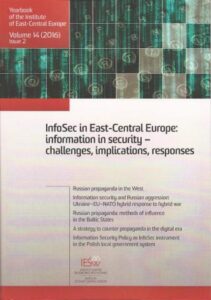Strony: 113-130
Wydanie: Lublin 2016
DOI: --
Sposób cytowania: A. Ágh, ‘The core-periphery divide in the EU transformation crisis: challenges to the Visegrád Four’, Yearbook of the Institute of East-Central Europe, vol. 14, no. 2, 2016, pp. 113-130.
Słowa kluczowe: Central Europe, Eurozone crisis., politics, V4, Visegrád Four
Abstrakt:
This paper outlines the impact of the Eurozone crisis and the ‘dual crisis’, i.e. the Ukrainian and the refugee crisis, on the New EU Member States (NMS) in general and on the Visegrád Group countries (V4) in particular. The negative differentiated integration of the NMS that dangerously diverge from the mainstream European developments is emphasized. It is argued that the global financial crisis intensified the core-periphery divide in the EU. As a result, a new form of regional divergence emerged, whereby the NMS alienated from the EU’s core. Since, following the global financial crisis, the EU focused on problems in the Eurozone, problems in the EU’s eastern periphery were marginalized. Overall, today, the danger is that a regional ‘Unholy Alliance’ or ‘Authoritarian International’ might emerge in the V4 as a result of increasing divergence within the EU.

PDF: Pobierz